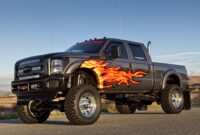U-Haul Car Trailer: Your Comprehensive Guide to Safe and Efficient Vehicle Transport cars.truckstrend.com
Moving a vehicle, whether it’s a family car, a classic automobile, or a non-running project, can be a significant logistical challenge. While professional auto transport services exist, they often come with a hefty price tag and rigid schedules. For the intrepid DIY mover, car enthusiast, or anyone needing to transport a vehicle efficiently and affordably, the U-Haul Car Trailer emerges as an indispensable solution. This comprehensive guide will delve into every aspect of U-Haul’s vehicle transport trailers, from their design and benefits to the practicalities of renting, loading, and towing safely.
Understanding the U-Haul Car Trailer
U-Haul Car Trailer: Your Comprehensive Guide to Safe and Efficient Vehicle Transport
At its core, a U-Haul Car Trailer, officially known as an "Auto Transport" trailer, is a heavy-duty, open-deck trailer specifically engineered for transporting vehicles. Unlike a tow dolly, which lifts only two wheels off the ground, the U-Haul Car Trailer carries the entire vehicle on its platform, ensuring that all four wheels are off the road. This full-platform design makes it ideal for a wider range of vehicles, including those with all-wheel drive, classic cars, or non-running vehicles that cannot be driven onto a dolly.
Key features that define U-Haul’s Auto Transports include:
- Hydraulic Surge Brakes: These automatically activate when your tow vehicle slows down, providing crucial additional braking power and enhancing safety.
- Security Chains and Straps: Integrated heavy-duty chains and tire straps securely hold your vehicle in place, preventing movement during transit.
- Easy-Load Ramps: Designed for convenient loading and unloading, these ramps are typically wide and sturdy.
- Low Deck Height: This design lowers the center of gravity, improving stability during towing.

These trailers are a popular choice for long-distance moves, transporting project cars, relocating vehicles that aren’t roadworthy, or simply freeing up space in a moving truck for household goods.
Benefits of Using a U-Haul Car Trailer
Opting for a U-Haul Car Trailer offers a multitude of advantages that cater to various transport needs:
- Enhanced Safety: The full-platform design keeps all four wheels off the ground, eliminating wear and tear on the towed vehicle’s drivetrain and tires. The integrated hydraulic surge brakes are a significant safety feature, providing better stopping power and control, especially for heavier loads. Secure tie-downs and chains ensure the vehicle remains stable throughout the journey.
- Convenience and Accessibility: U-Haul boasts an extensive network of locations across North America, making it easy to pick up and drop off trailers almost anywhere. Online reservations and vehicle compatibility tools simplify the planning process, allowing you to quickly determine if your vehicles are suitable.
- Cost-Effectiveness: For many, renting a U-Haul Car Trailer is a more economical alternative to hiring professional auto transport services, particularly for DIY movers or shorter distances. You save on mileage and potential wear and tear on your vehicle if you were to drive it separately.
- Versatility: U-Haul Car Trailers can accommodate a broad spectrum of vehicles, from compact cars to full-size trucks and SUVs, provided they meet the weight and dimension requirements. This versatility makes them a go-to choice for diverse transport scenarios.
- Efficiency and Flexibility: By transporting your vehicle on a trailer, you free up the interior space of your moving truck for household items. This allows for a more organized and efficient move, potentially reducing the number of trips required. You also have the flexibility to schedule your transport according to your own timeline.
How to Rent and Use a U-Haul Car Trailer
Renting and using a U-Haul Car Trailer effectively involves several key steps, focusing on safety and proper execution:
1. Reservation and Planning:
- Online or In-Person: The easiest way to reserve is online via U-Haul’s website, or by calling or visiting a local dealer.
- Vehicle Compatibility Check: Crucially, U-Haul requires you to input information about both your tow vehicle (the one pulling the trailer) and your towed vehicle (the one going on the trailer). Their system will verify compatibility based on weight, wheelbase, and towing capacity. This step is non-negotiable for safety.
2. Pickup and Hook-Up:
- Inspection: Before leaving the lot, thoroughly inspect the trailer for any existing damage, check tire pressure, and ensure all lights are working. Report any issues immediately.
- Hitching: A U-Haul representative will typically assist you with hooking the trailer to your tow vehicle. Ensure the hitch ball (2-inch diameter, minimum Class III rating) is correctly seated, the safety chains are crossed and secured, and the electrical connection for lights and brakes is firmly plugged in.
- Tongue Weight: Ensure the trailer is level once hitched. Proper tongue weight (5-10% of the total trailer weight) is crucial for stable towing.
3. Loading Your Vehicle:
- Positioning: Park your tow vehicle and the trailer on a level, solid surface. Ensure there’s ample space around the trailer for maneuvering.
- Extend Ramps: Pull out the loading ramps from the rear of the trailer.
- Load Slowly: Carefully drive the towed vehicle onto the trailer. For front-wheel-drive vehicles, load it facing forward. For rear-wheel-drive or all-wheel-drive, it’s generally recommended to back it on to ensure proper weight distribution over the trailer axles. Always consult U-Haul’s specific loading instructions for your trailer and vehicle type.
- Secure the Vehicle: Once positioned, engage the parking brake of the towed vehicle. Use the provided heavy-duty tire straps over the front tires, ratcheting them down tightly. Secure any additional safety chains or straps as instructed. Ensure the steering wheel is unlocked so the front wheels can pivot slightly with the trailer’s turns.
4. Towing Best Practices:
- Speed Limits: Obey all posted speed limits, and often, state laws require lower speeds when towing. U-Haul recommends a maximum of 55 MPH.
- Increased Braking Distance: Your stopping distance will be significantly longer. Maintain extra following distance.
- Wide Turns: Account for the added length of the trailer when turning, especially in tight corners or parking lots.
- Regular Checks: Stop every 50-100 miles to check the tie-down straps, tire pressure (trailer and towed vehicle), and overall security of the load.
- Weight Distribution: Uneven weight distribution can lead to dangerous sway. Ensure the towed vehicle is centered and balanced.
5. Unloading and Return:
- Safe Unloading: Reverse the loading process, ensuring the area is clear and level.
- Return: Return the trailer to the agreed-upon U-Haul location by the specified time. Ensure it’s clean and free of debris.
Important Considerations Before Renting
Before you commit to a U-Haul Car Trailer, a few critical factors demand your attention:
- Tow Vehicle Requirements: Your tow vehicle must have sufficient towing capacity (Gross Combined Weight Rating – GCWR), a sturdy frame-mounted hitch (Class III or higher with a 2-inch ball), and a functioning 4-pin or 7-pin electrical connection for lights and brakes. U-Haul’s reservation system will guide you, but knowing your vehicle’s specs beforehand is wise.
- Towed Vehicle Compatibility: The weight and dimensions (wheelbase, tire width, ground clearance) of your vehicle must fall within the trailer’s limits. U-Haul’s website has a detailed tool for this. Overloading is extremely dangerous and strictly prohibited.
- Insurance Coverage: Check your personal auto insurance policy to see if it covers damage to the towed vehicle or the U-Haul trailer while in transit. U-Haul also offers optional coverage plans like "Safetow" which provides coverage for the rented equipment and the vehicle being towed. It’s highly recommended.
- Driving Experience: Towing a trailer, especially a heavy one with a vehicle on it, changes the dynamics of your driving. If you’re inexperienced, practice in a safe, open area before embarking on a long journey.
- State and Local Regulations: Be aware of any specific towing laws in the states you’ll be traveling through, such as speed limits for vehicles with trailers, requirements for brake controllers (though U-Haul trailers have surge brakes), or chain laws in mountainous regions.
Tips for a Smooth U-Haul Car Trailer Experience
- Plan Ahead: Reserve your trailer well in advance, especially during peak moving seasons (summer, end of month).
- Inspect Thoroughly: At pickup, don’t rush the inspection. Check tires, lights, ramps, and tie-down equipment.
- Pack Smart: If you’re using a moving truck, consider what goes into the truck versus what goes with the car.
- Use U-Haul’s Resources: Their website, videos, and staff are excellent resources for instructions and advice.
- Drive Defensively: Anticipate stops, turns, and lane changes much earlier.
- Take Breaks: Fatigue can set in quicker when towing. Stop regularly to rest and re-check your load.
- Don’t Overload: This cannot be stressed enough. Exceeding weight limits is incredibly dangerous.
Challenges and Solutions
While U-Haul Car Trailers offer convenience, potential challenges can arise:
- Weight Miscalculation: If your vehicle is too heavy for the trailer or your tow vehicle, you won’t be able to rent. Solution: Use U-Haul’s compatibility tool accurately. If your vehicle is truly too heavy, professional auto transport is the safer alternative.
- Hitching Difficulties: Sometimes connecting the trailer can be tricky. Solution: Don’t hesitate to ask the U-Haul representative for assistance or a demonstration.
- Flat Tire or Breakdown: While rare, equipment issues can occur. Solution: U-Haul offers 24/7 roadside assistance. Ensure you have their contact information.
- Theft Concerns: If you need to leave the trailer unattended, security can be a concern. Solution: Use a hitch lock and a wheel lock for added security.
U-Haul Car Trailer Pricing Overview
It’s important to note that U-Haul pricing is dynamic and varies significantly based on several factors, including:
- Location: Prices differ by city and state.
- Duration: Daily, weekly, or monthly rentals.
- One-Way vs. Round-Trip: One-way rentals are generally more expensive due to logistics.
- Availability & Demand: Peak seasons or high demand can increase prices.
Therefore, providing exact fixed prices is impossible as they change frequently. The table below provides estimated ranges and explains the factors influencing the cost.
| Item/Service | Description



